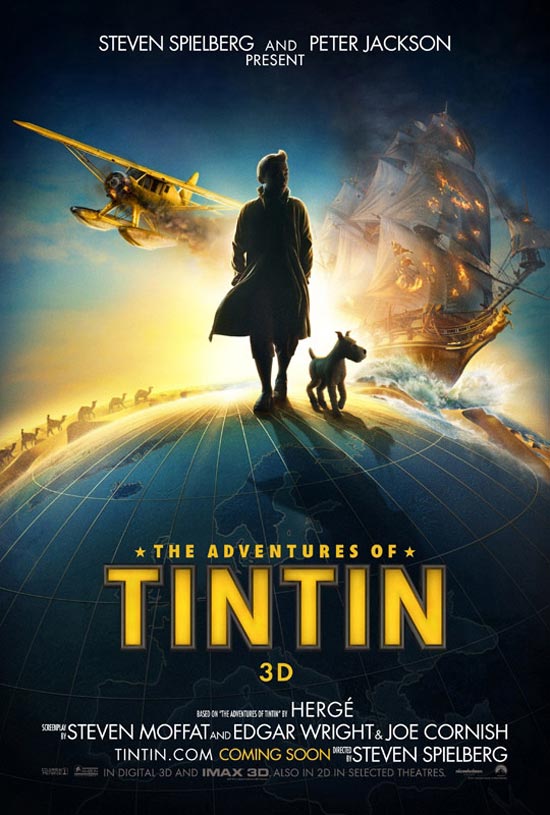Tintin has been around in comic book form since the 1920s. The comics have been translated into more than 50 languages, and been adapted for TV, radio, theatre, and film. This new 3D film is best summarized by its director, Steven Spielberg, who called it “Unapologetic, shameless adventure.”
Spielberg, who has been a fan since a critic compared Raiders of the Lost Ark to the Hergé comics, first contacted Peter Jackson about using motion capture technology to bring to life Snowy, Tintin’s dog. Apparently the two were then invited to visit the set of Avatar by James Cameron and the technology amazed them so much they decided to use mo-cap for the entire film.
I was not the least bit surprised to hear Spielberg is eager to return to direct Tintin 3 (after Peter Jackson directs Tintin 2) after seeing the film. From the opening animated titles sequence and the cameo of Hergé’s original Tintin figure this film is set up to be a lot of light fun. With the freedom to move his camera anywhere and string shots together seemlessly, Spielberg lets loose with some marvellous tracking shots and transitions. The camera moves through solid glass, in and out of windows, and rushes at speeds no real camera could go; the film is flying over streets one moment and plummeting down to a rushing river the next.
On the IMDb cast list the actors are all listed as doing the “voice” of their characters, which is not the whole truth. The mo-cap translates everything about the actors’ performances onto their digital characters, and this is one of the most compelling parts of the film. Unlike previous mo-cap films like Avatar or Robert Zemeckis’ The Polar Express, these characters do not share the same facial features of the actors. However, even through the whisky-grizzled face of Captain Haddock, Andy Serkis manages to land another marvellous performance, Daniel Craig is a terrific villain, Simon Pegg and Nick Frost are the hilarious Thomson and Thompson, and Jamie Bell makes Tintin’s thirst for adventure both realistic and contagious.
By creating characters that are essentially photorealistic interpretations of the Hergé originals and then selecting actors to wear them as masks, Spielberg has finally solved the “creepy factor” of mo-cap animation. The narrative occassionally slips into adventure for the sake of adventure, but it is so much fun it doesn’t really matter.




No comments:
Post a Comment